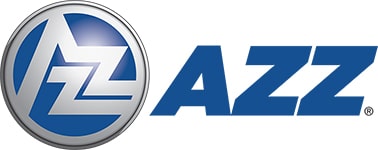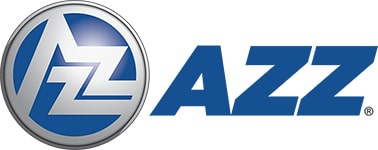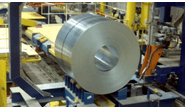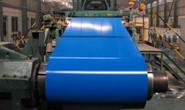
AZZ sees tariffs boosting demand for US-made coating solutions
Coil coater AZZ Inc. sees President Trump’s aggressive trade policy stoking demand for coating solutions for steel and aluminum made in the US.

Coil coater AZZ Inc. sees President Trump’s aggressive trade policy stoking demand for coating solutions for steel and aluminum made in the US.

AZZ Inc. posted higher earnings in its fiscal fourth quarter, but sales slipped on weather disruptions.

AZZ Inc. recently announced it is shaking up the duties and roles of two executives involved in its Precoat Metals segment. Kurt Russell, Precoat’s current chief operating officer and former president, is moving into a senior vice president position within AZZ Inc. into the newly created role of chief strategic officer. “We are excited to […]

AZZ Inc., relatively unfazed by volatility in zinc pricing, is optimistic about demand prospects and M&A opportunities, especially in the galvanizing sector.

AZZ Inc. posted sharply higher second-quarter profits driven by increased sales of and better demand for its products. The Fort Worth, Texas-based hot-dipped galvanized and coil coater reported net income of $35.4 million in the second quarter of 2024, up 43.3% from $24.7 million in the same quarter last year. It posted Q2'24 sales of $409 million, up 2.6% from $398.5 million in Q2'23.

AZZ Inc. said it is seeing improving demand for its coil coating services as it reported a solid quarterly performance.
AZZ – Precoat Metals has announced the promotion of Jeff Vellines to president of the company.

Azz Inc. swung to a profit in its fiscal second quarter of 2024 as its metal coatings business was lifted by infrastructure spending.

AZZ Inc. reported an 18% increase in net income in its fiscal first quarter of 2024, driven by a strong performance in its Metal Coatings business and by a full quarter with its Precoat Metals acquisition. The Fort Worth, Texas-based galvanizer and coil coater posted net income of $28.5 million in its fiscal Q1 ended […]

Metal coater AZZ Inc. has acquired privately held hot-dip galvanizing and zinc electroplating company Acme Galvanizing Inc. The deal, terms of which were not disclosed, includes all of Milwaukee-based Acme’s assets. The deal will extend the reach of Fort Worth, Texas-based AZZ into the Midwest, the company said. “With the acquisition of Acme, AZZ enhances […]

Flack Global Metals has partnered with First American Resources in a joint venture that will offer prepainted products to the market later this year. The deal is a bit of a departure for FGM, which is now the minority investor in an enterprise that is installing high-end coil coating equipment. FGM has achieved $350 million […]

Sherwin Williams, a major supplier of paint and coatings to coil coaters and other industries, announced a price hike on Monday, citing the need to recoup the escalating costs of raw materials. The company notified its customers to expect a 5 percent increase on all shipments of PVDF and FEVE topcoats, a 7 percent increase […]

Precoat Metals is purchasing the coil coating assets of the Steelscape Fairfield, AL facility. There are no immediate plans to reopen the plant as the company already has a facility located a few miles away in Hueytown, AL. The Steelscape facility consisted of a single paint line which was reported (by sources outside of Precoat) […]